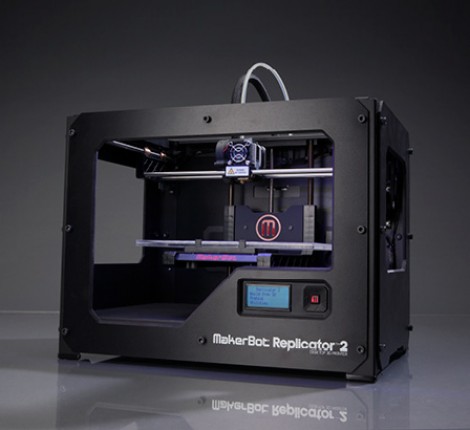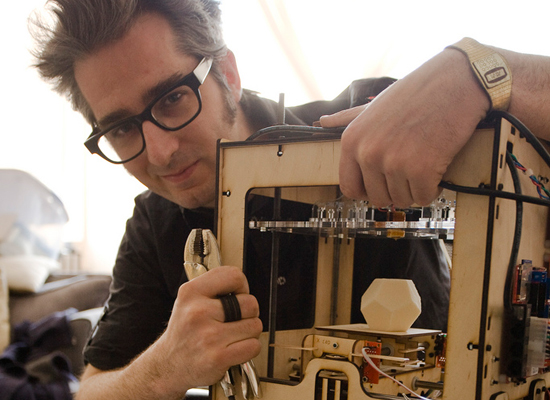Wow, today is an unexpected news day for 3D printing. Over at Ace Monster Toys, we’ve had a number of 3D printers, either in the space (Makerbot Cupcakes, part of a Prusa Mendel, and a Printrbot LC) but have always found them a bit of a pain in the ass, frankly. By and large, they haven’t lived up to the hype, mostly because of maintenance issues which make them a bit unreliable for the kind of day in and day out printing by random folks that you expect to have in a hackerspace.
We’ve been talking about getting an Up printer for a while. The downside of the Up printer is that it isn’t open source. It is a Chinese made printer using the ideas from the RepRap community but using closed source software. It isn’t a tinkerer’s device. A lot of people who have 3D printers have them as a project in and of themselves, which makes them fun to work on (I guess). If you just want to make a 3D file and print it, you’re less interested in the printer as its own project and just having it work. By a number of accounts of friends at professional prototyping shops and research groups, the Up just works. It feels bad since it betrays the open source ethos.
Because of all of this, we’ve gone back and forth on this. I still expect that we’re likely to get an Up at AMT, based on price and reliability. The wrinkle today is that Makerbot Industries, who was the first company to really comercialize RepRap hobbyist technology has finally created a printer that they consider a “prosumer” device, the Replicator 2. They announced it today in a live press event and their website has now been updated to reflect the new products.
My issues in the past with Makerbot Industries is that they tend to orphan users of their devices and have an annual or less update cycle. So, if you buy your new shiny printer kit from them, build it and are working with it, Makerbot Industries tends to end support a few months after you bought it in order to suddenly unveil their new printer. They don’t do legacy support, except within the community (not their staff), which really sucks. When I owned one of their Cupcake printers, I felt really burned by this. I know, for example, that Hacker Dojo in Mountain View just ordered a Replicator printer, which was the new hotness less than six months ago at Maker Faire, just a week or so ago. Suddenly, their printer is now old news and probably won’t be supported in six months.
So, this is the downside of a quickly iterating hardware startup.
The upside of quick iteration is that the state of the art seems to really improve quickly, which is the case today. The Replicator 2. It has a 0.1 mm layer height on the parts it prints out, which is damn good out of the box. I’ve seen other printers do this or better but not without a massive amount of tweaking and playing with them. This printer has gone from ye olde lasercut plywood, the standard for almost all, to a metal framed, factory assembled printer.

Features that they are listing are:
- 1.2 L x 6.1 W x 6 H in(12.75 in diagonal) buid area (which is huge)
- 100-micron layer resolution
- Wear-resistant, oil-infused bronze bearings
- Black powder-coated steel frame
- Optimized for PLA (which is a nicer material in the long run)
- New software (Makerware) which seems to be compiled code and optimized for use by normal humans (downside is that they are using a new file format…)
I’m actually excited by this device, which is unusual for my jaded self at this point. My main, personal, goal with a 3D printer is to design and print cool things. I’m actually quite tired of the ongoing “build and maintain a 3D printer from scratch or a kit” type projects. I just want to print stuff. This new Replicator 2, along with the current Up Plus and the upcoming Up Mini, is one of the few things out there to fulfill this goal.
The one downside is that Makerbot Industries’ prices keep going up. The Cupcake was something like $900 or $1,000 as a kit and the common price point is from there to about $1,400. This new device is $2,200, basically. That isn’t cheap, which means people really need to think about whether they want or need this device. It is definitely worth considering though.
Update: I see Wired magazine has a big piece up now. Make Magazine has a mini review up as well.
 Continue reading
Continue reading


